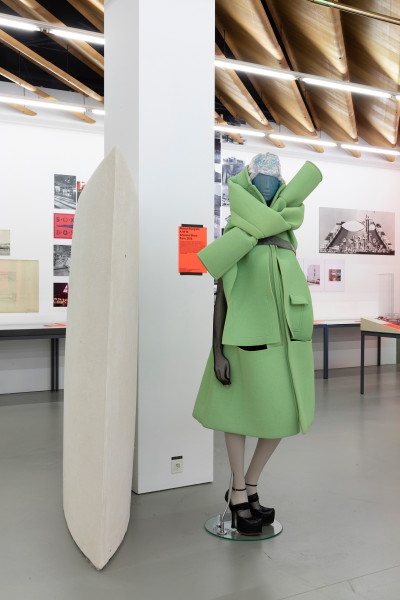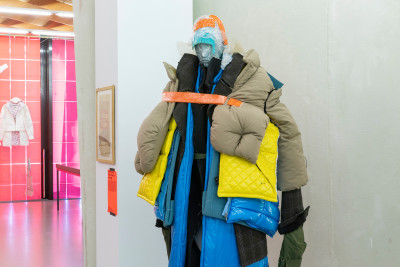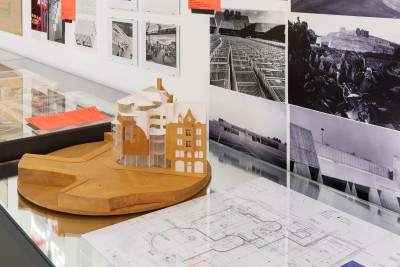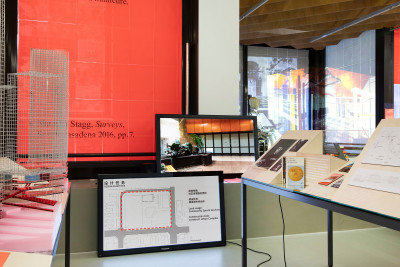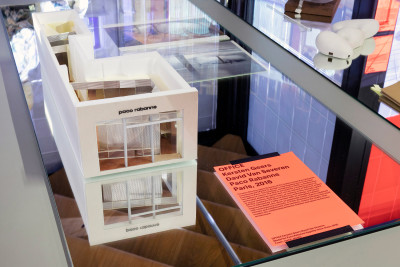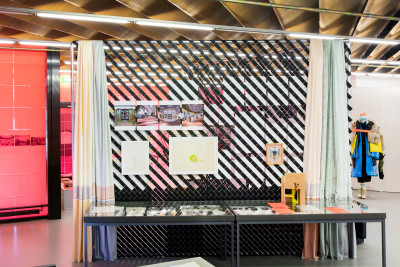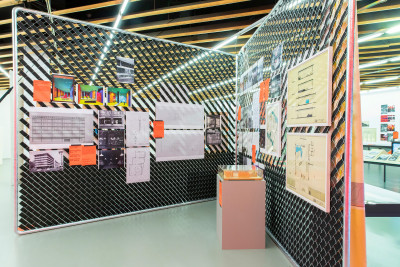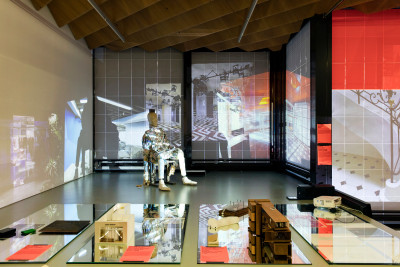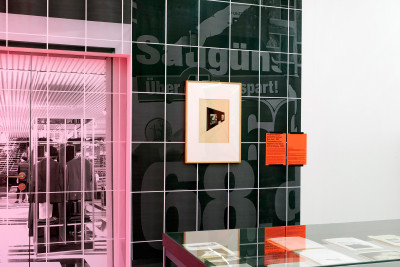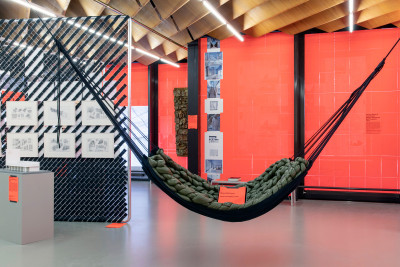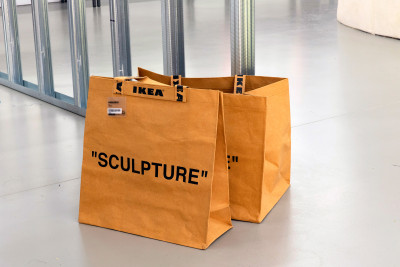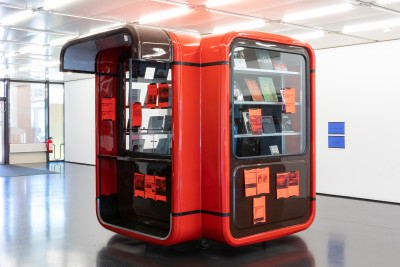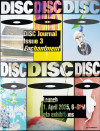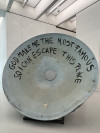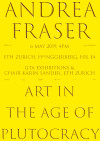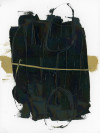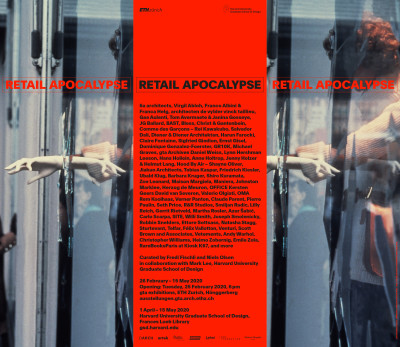
Retail Apocalypse
26 February – 15 May 2020
Opening on Tuesday, 25 February 2020, 6 pm
With a welcome by Philip Ursprung and an introduction by Fredi Fischli and Niels Olsen, Janina Gosseye, Adam Jasper and Mark Lee.
gta exhibitions, ETH Zurich, Hönggerberg
Full exhibitions documentation: https://retailapocalypse.gta.arch.ethz.ch/
Canadian Centre for Architecture
15. April 2022 – 15. Januar 2023:
https://www.cca.qc.ca/en/events/81876/retail-apocalypse
The research for the exhibition was prompted by the realization that “shopping” is history—that it is not merely a practice that can be historicized (for what practice cannot?), but that the physical, commercial, and social practices that converged to make it a unified field have now parted company, perhaps irreversibly. We are all familiar with predictions of the urban arcade giving way to the suburban mall in the twentieth century, and the flaneur disappearing in the wake of the automobile. More recently, however, we find ourselves in the throes of even more radical change. As the bulk of shopping shifts online, “The Bahnhofstrasse,” the English “High Street,” and “Main Street” in small-town USA are entering what might be termed a terminal phase. The exhibition Retail Apocalypseinvestigates the history of retail architecture. It takes theoretical recourse to Frederic Jameson’s thesis that postmodernism is nothing more than the cultural logic of late capitalism. It explores how the early 1970s marked a new era in which culture has become integrated into commodity production generally. The exhibition looks back to “Le Bon Marché” as depicted by Félix Vallotton in the late nineteenth century, Friedrich Kiesler’s publication Contemporary Art Applied to the Store and Its Display of 1930, Gae Aulenti’s oblique display for Fiat in Zurich, or SITE’s stores for Best, as examples of the postmodern era. Shopping has become, as Rem Koolhaas argued in Harvard Guide to Shopping, the last remaining form of public activity. This seminal study was published almost two decades ago and, in the meantime, shopping has undergone even more drastic change.
In the twentieth century shopping was a major catalyst in city planning. But what role does shopping play in today’s cities? To be polemical, one might start with the “dead mall” (the failed shopping mall or big box store) on the one hand, and the “flagship store” on the other. What is the value of the brute material fact of the dead mall for contemporary architects? What potential does the condition of uselessness offer? The obsolescence of the shopping mall, ruthlessly defined by its program, offers degrees of freedom for architecture that resemble, or even constitute, a kind of autonomy. In contrast, “flagship stores” remain vital, although not necessarily for shopping per se. They serve as branding for luxury goods. Their semiotic function as signifiers feeds into ever increasing differentiation, even as they contribute to a kind of generic global wealth culture. Many of today’s most renowned architects have invested their architectural expertise in retail. Think of Herzog & de Meuron’s and Rem Koolhaas’s connection with Prada, David Chipperfield’s numerous luxury stores, Smiljan Radić’s catwalks for Celine or his recent design for Alexander McQueen, and David Adjaye’s luxury shopping mall in Beirut—to name but a very few.
On a smaller scale, the fine arts are making inroads into retail architecture, specifically with forms of display. Franco Albini and Franca Helg as well as Carlo Scarpa applied what they had learned from both domains in their commissions for Olivetti, and were seminal in establishing a history of collaboration in store design between artists, architects, and designers. Another impressive, although little known example is Dominique Gonzalez Foerster’s hundred and something interiors for Balenciaga—a kind of hidden oeuvre by the artist. Contemporary practices organized as collectives or brands, such as Telfar or Hood By Air, are using the commercial realm and especially fashion as a space for political discourse outside the art institution, where they address and challenge notions of gender, class, and value. Given the growing commercialization of institutional space, the actual space of retail promises a potential for subversion—Sturtevant’s The Store of Claes Oldenburg in 1967 serves as a historic role-model for this form of practice in the exhibition.
The exhibition will reflect on the question of how the value of architectural surface or language is determined. Architectural form is part of an economic reality and it creates surplus value. The artistic expression—the surface essentially—is therefore most certainly not commercially innocent, as demonstrated by retail applications. Architecture proves to be a motor of seduction that aims to drive consumption and further the logic of capital. Several writers who have addressed the relationship between architecture and value form a literary counterpart in the exhibition: JG Ballard’s novel Kingdom Come on violence and consumerism; Natasha Stagg’s Surveys, in which the protagonist leaves her job at the mall to become a digital influencer; or Janina Gosseye’s and Tom Avermaete’s study of the shopping mall’s influence on both high and pop culture.
Curated by Fredi Fischli and Niels Olsen (ETH Zurich) in collaboration with Mark Lee (Harvard University Graduate School of Design)
Photos: Nelly Rodriguez



